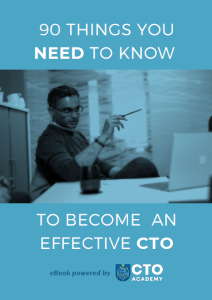No matter how hard you might try, you simply can’t avoid it; AI is everywhere and is here to stay.
But what’s the view of today’s technology leaders about tomorrow’s reality?
How will it impact their role as they face ever-increasing expectations around the how, where and when of implementing an AI strategy?
Because it seems that every day brings fresh claims, courses and newly minted experts on the topic and it’s multiple variants with a mixture of the utopian, dystopian and much else in between.
In one corner, it will elevate humanity to as yet unthinkable levels of freedom and potential.
In the other, warnings about the complete destruction of the human race by AI-powered autonomous robots and weaponised state machines.
There have emerged the modern-day Oppenheimers such as Dr Geoffrey Hinton who want to squeeze the genie back into the bottle as they warn about the existential risk posed by the creation of true digital intelligence.
In stark contrast to the unfolding nightmare described by Dr Hinton, we have Marc Andreessen, software engineer, entrepreneur and famous venture capitalist who is firmly on the utopian side of the argument.
In an article which announced his optimistic take, “Why AI Will Save the World”, he predicts that AI can ‘make everything we care about better’, with education, healthcare, government, productivity, the arts and sciences all immeasurably improved.
Naysayers are dismissed as either naive ideologues or self-interested opportunists.
Public statements about the dangers of AI are stoking ‘an irrational moral panic’, he says.
Andreessen’s view challenges AI critics such as the aforementioned Dr Hinton and also tech heavyweights like Elon Musk and Steve Wozniak who in March 2023 signed an open letter calling for a six-month pause in AI development.
Now, not so long ago it was Andreessen Horowitz which hyped the shattered cryptocurrency bubble in which they had a significant vested interest. But leaving aside that cynical take on his utopian vision for AI, Andreessen has a strong track record in the prediction game and the article is a worthy and uplifting contribution to the frenzied debate.
But is he likely to be more correct than the naysayers?

More importantly, how do you make the right decisions for your organisation, particularly if you have an increasingly anxious CEO breathing down your neck because ‘we don’t want to miss out on the opportunity’?
Here at CTO Academy, it’s a regular topic of concern at almost every one of our live debates and community discussions.
Our own co-founder and CTO lecturer and coach, Jason Noble, acknowledges that ‘there’s a lot of hype’. He also points out that the opinions of many prominent figures are at risk of being seen as ‘self-promoting’.
Jason’s main concern centres on deskilling. He warns that if basic tasks are devolved to AI, essential skills will be lost.
‘This makes me nervous — if low-value jobs disappear, how will people then gain the core skills needed to fill the higher-value jobs?’
For Jason, the development of AI must be accompanied by a revolution in education, with a particular emphasis on the importance of critical thinking.
‘In the future, we’ll need problem solvers and engineers, so we need a fundamental change in the educational system around teaching people how to think.’

One of the biggest areas of contention in the AI debate is the role, if any, of regulation. More specifically, the introduction of laws at national and international levels to control the development and application of AI.
Jason is clear on this point, ‘It is very difficult to regulate innovation and many laws become outdated before they are even ratified. However, the current process of releasing AI algorithms without extensive testing is concerning. Regulating the impact of AI would make companies think twice about releasing, but not necessarily slowing innovation. Only a handful of companies have the budget to run the massive server farms and thus could be regulated.’
(Which, in defence of Andreessen, is the only note of caution in his otherwise ebullient perspective.)

Jason also warns that the uncontrolled availability of AI software poses a danger for CTOs.
‘As software becomes more of a commodity, the management will become harder and, like departments creating shadow IT, non-tech departments will become shadow software developers which opens the debate on compliance, security and maintenance.’
He also points out that ‘it is unrealistic to rely on self-regulation. Computer scientists ask if we can solve a problem, not should we. There’s little morality involved.’
Given these reservations, you might be surprised to find that Jason is actually an optimist about AI.
‘With all the caveats mentioned before, overall, I am optimistic about its potential within society and within our roles as tech leaders. Though I also believe we have bigger problems — debt and crashing economies and the environment — AI might help us address some of these issues, particularly on the environment and economic growth which has been particularly slow in many OECD countries.’
Someone who is firmly and without hesitation in the Andreessen camp is Kiran Palla, based in Chicago.
Alongside being a member of CTO Academy, Kiran is a CIO/CTO, a US Federal Government executive with the Department of Treasury and a Forbes and Harvard Advisory Council Member.
He is also heavily involved in discussions on the impact of AI, particularly in the publishing industry, and advises the US government on the issue.
His unequivocal opinion?

Expressing his personal view, Kiran predicts that ‘there will be a lot of positive effects of the AI revolution in our lifetime — great advancements in medicine, disaster management, public health and [combating] the climate crisis’.
During the last three to four months I have attended at least 20 or 30 sessions and roundtables. The first question is always about AI. It’s like there is a fear of missing out. All the major players are integrating generative AI into their products. So, it’s going in a positive direction.
‘Yes, there will be a lot of stress and there will be a lot of negative views in the beginning, but I think the temperature is already starting to lower.’
In Kiran’s view, the areas that will benefit will include healthcare — ‘surprisingly, because healthcare usually lags behind, because of [regulations around] privacy and patient information’ — the financial sector, manufacturing, marketing and the space industry.
But we need rational optimists in this debate and Kiran acknowledges the downsides.
His number one concern?
‘Fake data, faking information… it could be anything, a fake Wall Street report for example. With fake data like that, it can bring companies down. There is also a lot of fear that personal reputations can be targeted.’
Number two and three are risks to privacy and bias.
‘A lot of HR policies will be impacted by unwanted bias,’ he says.
And finally reliability. ‘The data is not clean, it is not validated that much, and large language models are already generating a lot of outputs that are not reliable.’
It seems we’re all in agreement that regulation is pointless.
‘You can regulate. Italy banned ChatGPT right away, and a couple of European countries came in and then everybody started to ban ChatGPT. But how long can you do that? You let development go for more than a decade and all of a sudden you want to put [in] some controls and regulations.’
An early example?
‘Microsoft and OpenAI shocked the world with the power of large language models in March. Everybody started learning, including myself. I’m familiar with it but I said OK, let me dig deeper into it. And surprisingly, there were already large language model optimisers available, already in place, like LangChain. This is a model that works against large language models, optimising their performance. So how are you going to regulate it? There is no way.’

Kiran foresees particular challenges ahead for CTOs.
Simply keeping pace with developments is paramount given that CTOs will have to guide their colleagues through the fast-changing AI landscape.
‘For CTOs, the biggest challenge is learning. It’s not like at C-level, [where] you can just oversee [the change]. There is no such thing anymore. You’ve got to learn because your engineers need upskilling, your architects need upskilling.
You can no longer ask an engineer for input. Your engineers will be fumbling. You have got to provide the input, the learning [and] the leadership. Your own hands-on involvement is critical, otherwise, you’re going to be outdated. I myself am learning every day.’
‘CTOs must provide a clear roadmap to AI adoption, complete with training and mentoring provision. Technical adoption is going to be the biggest challenge,’ he says.
‘With regulation, with [the risks of] bias, fake data, how can you even provide a roadmap? There are challenges with [working out] a clear roadmap, challenges with a product roadmap, challenges with adoption, challenges with strategy — that is going to be the biggest.
‘I can’t stress enough — every day is a challenge,’ he says.
Challenging it may be, but for Dallas Goldswain down in Johannesburg, there are a few downsides to the rapid development of AI.
‘I am not worried at all,’ says Dallas, who is head of engineering at consumer intelligence platform ProQuo AI, ‘I think it will only [adversely] affect people who are not willing to change and adapt, but that goes for all new tech. Using AI as a 2IC both as a leader and engineer will add value to getting the little things done quicker.
‘For code, I feel there is a long way to go, but for writing, getting skeletons for articles, reports, processes etc, I think it’s great.’
In July 2023, McKinsey published “The Economic Potential of Generative AI: The Next Productivity Frontier Report”. It contained some key insights on generative AI and work productivity which are worth listing here:
– Half of the work activities to be automated with then-existing technologies.
– Technology performance is most likely to match or even surpass human performance quicker due to generative AI.
– The potential work hours that can be automated have risen from about 50% to 60-70% due to generative AI advancements, especially in natural language processing.
– Adoption scenarios have accelerated due to generative AI, with a potential shift of 50% in work activities occurring approximately a decade earlier than previous estimates.
– Automation adoption will likely be quicker in developed countries with higher wages, as the cost-benefit analysis will tilt in favour of automation sooner.
– Generative AI will mainly affect knowledge work, especially decision-making, collaboration and application of expertise.
– Its natural language capabilities mean it can automate activities that require understanding and using language, thereby transforming occupations like education and technology.
– Contrary to previous automation technologies that majorly affected low-skill workers, generative AI will make an impact on more educated workers, challenging the current educational credential system.
– Generative AI could aid in countering declining global economic growth, compensating for slowing employment growth.
– From 2023 to 2040, generative AI could boost global productivity growth by 0.2 to 3.3% annually, based on the rate of adoption.
Alex Velinov, CTO at Tag Digital in Glasgow and another CTO Academy member, comments that this report raises many issues, not least the need for education reform, as noted by Jason earlier.
Alex says, ‘Most jobs we currently recognise will be automated or taken over by AI. However, a new set of roles will emerge, particularly related to managing and programming AI systems.’
‘We need to equip the next generation with transferable soft skills that are valuable across all professions, such as critical thinking, creativity, and empathy.’
Alex acknowledges the challenge CTOs face in keeping up with the rapid changes in AI development.
‘How to stay on top of everything really depends on where your passion is. The first step is identifying what you genuinely love to do.’
He further elaborates on that by saying, ‘For those in the tech industry or skilled professions, it’s crucial to learn about AI and its applications in your domain. Stay updated on new trends and tools, and be proactive rather than waiting for direction from employers.’
‘If your current job doesn’t align with your passion, now is a prime time to pivot towards skill-based careers like plumbing, electrical work or landscape design, and pursue what you truly desire.’
Another emerging issue facing CTOs and their organisations is AI governance. According to Gartner Peer Community Data, the three biggest challenges are:
The report cites other interesting themes as well around fragmented technologies, poor collaboration and a lack of underlying data governance.
For a final view, we reached out to our CEO here at CTO Academy, Andrew Weaver, to take the temperature of the debate within our wider tech leadership community.
Andrew says, ‘I host live debate sessions each month with our community of tech leaders from around the world. There is definitely some anxiety about the uncertainty ahead because no one can predict the direction of travel. But most of our members are by nature excited and intrigued with the potential of new technologies and how they can adapt to existing models.’
‘The biggest pressure we see is less about the technology and more about the expectations. Suddenly, every CEO and board is demanding an AI strategy, even if AI is not yet central to their model. Because of this, the expectations and the pressure on tech leaders have just ramped up.’
‘As is ever the case with tech leadership, it’s less about the management of the technology and more about the management of the people.’
To sum up, there seem to be two key parts to the AI debate. This is particularly true from our perspective as technology leaders. After all, it is we who must grapple with the uncertain direction of travel.
First, the effect of AI on society.
There are many potential gains, including greater efficiencies, especially in healthcare. But there are going to be some unwanted effects as well. For example, the manipulation of people through fake news and videos. Or, to a much greater extent, revenge porn and security breaches by impersonation.
Second, the effect of AI on businesses.
It will change the core of the software development process, making it more accessible but harder to control, secure and maintain. There is pressure on CTOs to ‘include AI in their products’ for investment and fund-raising. This can muddy the waters and set different expectations of what is possible. Hence, we need to teach the next generation of engineers differently. If we don’t, their skills could be obsolete as they enter the workforce.
Putting one’s head in the sand is not an option.
The more we understand how AI can affect society and businesses in good and bad ways, the more we can educate our colleagues, friends and families to prevent us from sleepwalking into dystopia but to embrace the use of AI for the greater good.
90 Things You Need To Know To Become an Effective CTO

London
2nd Floor, 20 St Thomas St, SE1 9RS
Copyright © 2024 - CTO Academy Ltd